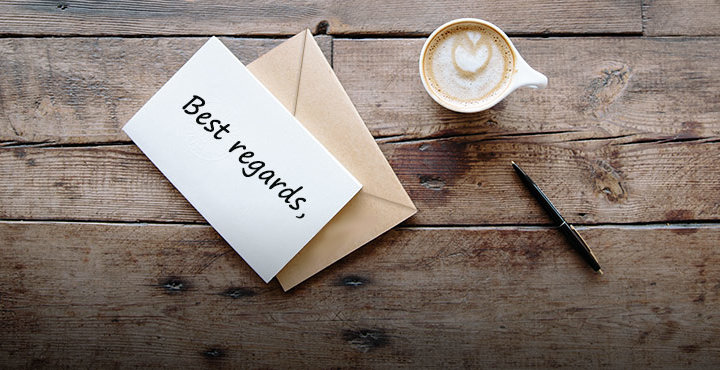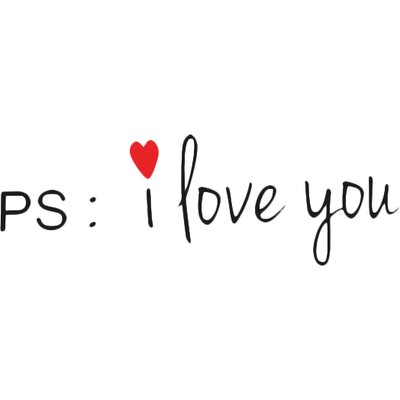Writing a good letter is a necessary skill. Many of us have lost touch with these basic requirements of how to do so, because it is not a common practice in this world of modern technology. Nonetheless, it is a great skill to have especially if you are launching out into the corporate world.
After all, composing a proper email requires the same skills as composing a traditional letter, on occasion.
The Importance of Closing a Letter Properly
Do not be misled. Knowing how to close a letter is vital information that you must master.
You want the reader to have a good lasting impression, when they finish reading your message. So, choosing to close your business email with “Love, Alex” will certainly disrupt all the excellent points you worked so hard to incorporate throughout the email itself.
Just those two words can do a world of harm to your professional credibility.
Closing a business letter requires that you be both respectful and professional. Yes, it is true that you do not always have to be 100% formal when you end a letter. However, this must be managed carefully and guided by to whom you addressed the letter.
There are closings that convey some level of warmth and a bit less cordiality, if you prefer to use them.
Tips on How to End a Letter
You run the risk of being judged for not being able to compose an email and constructing it in a proper format. But do not worry! Today, we will share with you a few tips on how to end a letter.
Include a Complimentary Close
Phrases such as "Regards" or "Sincerely" are often referred to as a complimentary close. These are the more popular brief phrases that are included just before you add your name at the bottom of a letter.
You might consider using other phrases such as "Kindest regards" or “Best wishes,” if you are addressing a work colleague. Remember, you want to try and keep your work communications on the more formal side. And if you are writing to a higher-level executive, then it is advised that you choose a complimentary closing phrase for your letter like "Respectfully yours."
Complimentary Closings to Avoid
The primary rule of composing a business letter and closing a business letter is not to get personal.
Generally, your letters or email communications are logged, archived or shared with other employees of the company. We have all seen at one time or another, where an email thread is continued for some time. And what happens, is that you can read the emails, which preceded the more recent response.
So do not make the mistake of getting too personal and having that continually passed along. In addition, you might offend the receiver and cast some amount of embarrassment on them as well.
More Examples of Letter Closings to Avoid
For example, using “Fondly” or “Forever yours” in a business letter is not advised. The person might think that you are romantically interested.
A few of the examples above are just super personal and completely inappropriate for a business letter, namely “XOXO” and “Love.” Closings like these like these should be kept explicitly for when you are communicating with your spouse, boyfriend, close friend or family member.
Remain within the proper boundaries for business communications.
Engender Continued Conversation
On another note, let the closing sentences of your email be one that welcomes continued dialog. Do not be assertive. For example, try to use “Please feel free to contact me for any further clarification.” This is a popular and safe choice.
Where you need to meet with the person, or require a response, try to ask. You could include “When is the best time to have our meeting?”
You could also supply a number of suggested times, that are possibly convenient for both of you. For example, “Would 3:00 p.m. on Thursday work for you?” or “How does first thing on Monday morning at 9:30 a.m. work for everyone?”
Enclosures, Attachments and Other Notations
Usually, you can include other additional notations at the bottom of your business communiqué. These might be postscripts to other people, courtesy copies or enclosures.
Generally, they are placed after the signature block.
So you can type "Encl.," which is the abbreviated term for enclosures. For both an email and a physical copy of a letter, it stipulates that there are pertinent attachments included for review.
When "CC," is used, it is the abbreviated term for courtesy copies. Underneath this, in alphabetical order, you will likely see several names listed below.
Sales letters are known to include "PS," which is the abbreviated term for postscript. They tend to hit you with some convincing argument of why you should purchase an item or service “Now.”
Examples of Letter Closings
Below, we have included a listing of letter closings that are more suitable for business communiqué. Some of which, you might already know.
These are the easiest and most practical letter closings examples, which are generally included when you think about how to end a business letter. They are correct to use no matter the type of letter and will not cause any offense.
The closings above can be considered a degree more personal. It is fine to use these, if you know or are a bit more familiar with the receiver of the letter. This generally implies that you have met them at a work event, had a phone conversation or spoken to them face-to-face.
As you can see, the ones above are now more personal than the first closings. They are used when you have a connection with your colleague or have more interaction with them. It is fine to use these examples, because the person will be able to relate, might feel the same way and can bring a closing to the issues addressed in the letter.
Keep in mind, the content and the closing must relate.
A More Extensive Listing of Closing Examples
The above closings are in no way the full extent of what you can use. We have added a more extensive listing below that we hope is helpful as you try to improve on how to end a letter.
Just remember, you want to use a closing that matches the relationship that you have with the receiver of the letter.
The gratitude letter closings:
The letter closings to use when you hold someone in the highest regard:
The sincere letter closings:
The “Thankful” letter closings:
More personal letter closings:
The “Yours” letter closings:
Look back on all the closings above. Do you notice anything about the way the closings are written? If you notice that the first letter of all the letter closings is capitalized, then you are on target. Whether the closing is made of one word or more, only the first word should be capitalized.
The Proper Layout for the Closing of your Letter
So now that you understand and know more about the appropriate letter closings to use in a business letter, let us explore the layout for how to end a letter.
After you have decided on which closing to use, it must precede the comma. This is clearly represented in all the examples above. Then in the next line, you have a space and after that, in the following line you input your signature block. This is the traditional format for an email.
As mentioned above the email will require that you put your name, position, company name, and a contact number and/or extension.
For example:
“Respectfully,
(space)
Jane Doe, HR Manager
Logos Corporation
0010 Annex Ave.
Washington D.C.
Phone number: 999-011-3000”
In a physical copy of the letter, you should have four lines of space that separates your name and the phrase. It is in this area that you generally provide a written signature of your name, using a pen.
For example:
“Respectfully,
(space)
(space)
(space)
(space)
John Doe, Senior,
Chief Financial Officer.”
Focus Keyword(s): How to End a Letter




:max_bytes(150000):strip_icc()/Getty_complimentary_close-95465615-583f16f95f9b58d5b1c95a42.jpg)




